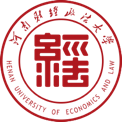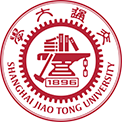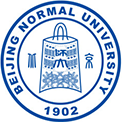2022考研英语一阅读理解试题及答案解析
来源:在职研究生招生联展网
时间:2021-12-28
随着在职研究生的发展,越来越多的人员报考在职研究生。其中,在职研究生考试作为最大家最关心的问题,受到不少人员的咨询。为帮助广大考生能够顺利考上在职研究生,下面就介绍一下全国统考真题及参考答案(完整版),具体内如下:
Section II Reading Comprehensio
Part A
Directions:
Read the following four texts. Answer the questions after each text by choosing A, B, C or D. Mark your answers on the ANSWER SHEET. (40 points)
Text 1
People often complain that plastics are too durable. Water bottles, shopping bags, and other trash litter the planet, from Mount Everest to the Mariana Trench, because plastics are everywhere and don’t break down easily. But some plastic materials change over time. They crack and frizzle. They “weep” out additives. They melt into sludge. All of which creates huge headaches for institutions, such as museums, trying to preserve culturally important objects. The variety of plastic objects at risk is dizzying: early radios, avant-garde sculptures, celluloid animation stills from Disney films, the first artificial heart.
Certain artifacts are especially vulnerable because some pioneers in plastic art didn’t always know how to mix ingredients properly, says Thea van Oosten, a polymer chemist who, until retiring a few years ago, worked for decades at the Cultural Heritage Agency of the Netherlands. “It’s like baking a cake: If you don’t have exact amounts, it goes wrong,” she says. “The object you make is already a time bomb.”
And sometimes, it’s not the artist’s fault. In the 1960s, the Italian artist Piero Gilardi began to create hundreds of bright, colorful foam pieces. Those pieces included small beds of roses and other items as well as a few dozen “nature carpets”—large rectangles decorated with foam pumpkins, cabbages, and watermelons. He wanted viewers to walk around on the carpets—which meant they had to be durable.
Unfortunately, the polyurethane foam he used is inherently unstable. It’s especially vulnerable to light damage, and by the mid-1990s, Gilardi’s pumpkins, roses, and other figures were splitting and crumbling. Museums locked some of them away in the dark.
So van Oosten and her colleagues worked to preserve Gilardi’s sculptures. They infused some with stabilizing and consolidating chemicals. Van Oosten calls those chemicals “sunscreens” because their goal was to prevent further light damage and rebuild worn polymer fibers. She is proud that several sculptures have even gone on display again, albeit sometimes beneath protective cases.
Despite success stories like van Oosten’s, preservation of plastics will likely get harder. Old objects continue to deteriorate. Worse, biodegradable plastics, designed to disintegrate, are increasingly common.
And more is at stake here than individual objects. Joana Lia Ferreira, an assistant professor of conservation and restoration at the NOVA School of Science and Technology, notes that archaeologists first defined the great material ages of human history—Stone Age, Iron Age, and so on—after examining artifacts in museums. We now live in an age of plastic, she says, “and what we decide to collect today, what we decide to preserve … will have a strong impact on how in the future we’ll be seen.”
21. According to Paragraph 1, museums are faced with difficulties in ______.
[A] maintaining their plastic item
[B] obtaining durable plastic artifact
[C] handling outdated plastic exhibits
[D] classifying their plastic collectio
22. Van Oosten believes that certain plastic objects are ______.
[A] immune to decay
[B] improperly shaped
[C] inherently flawed
[D] complex in structure
23. Museums stopped exhibiting some of Gilardi’s artworks to ______.
[A] keep them from hurting visitor
[B] duplicate them for future display
[C] have their ingredients analyzed
[D] prevent them from further damage
24. The author thinks that preservation of plastics is ______.
[A] costly
[B] unworthy
[C] unpopular
[D] challenging
25. In Ferreira’ s opinion, preservation of plastic artifacts ______.
[A] will inspire future scientific research
[B] has profound historical significance
[C] will help us separate the material age
[D] has an impact on today’s cultural life
Section II Reading Comprehensio
答案解析:
21. [A] maintaining their plastic item
22. [C] inherently flawed
23. [D] prevent them from further damage
24. [D] challenging
25. [B] has profound historical significance
Text 2
As the latest crop of students pen their undergraduate application form and weigh up their options, it may be worth considering just how the point, purpose and value of a degree has changed and what Generation Z need to consider as they start the third stage of their educational journey.
Millennials were told that if you did well in school, got a decent degree, you would be set up for life. But that promise has been found wanting. As degrees became universal, they became devalued. Education was no longer a secure route of social mobility. Today, 28 per cent of graduates in the UK are in non-graduate roles, a percentage which is double the average among OECD countries.
This is not to say that there is no point in getting a degree, but rather stress that a degree is not for everyone, that the switch from classroom to lecture hall is not an inevitable one and that other options are available.
Thankfully, there are signs that this is already happening, with Generation Z seeking to learn from their millennial predecessors, even if parents and teachers tend to be still set in the degree mindset. Employers have long seen the advantages of hiring school leavers who often prove themselves to be more committed and loyal employees than graduates. Many too are seeing the advantages of scrapping a degree requirement for certain roles.
For those for whom a degree is the desired route, consider that this may well be the first of many. In this age of generalists, it pays to have specific knowledge or skills. Postgraduates now earn 40 per cent more than graduates. When more and more of us have a degree, it makes sense to have two.
It is unlikely that Generation Z will be done with education at 18 or 21; they will need to be constantly up-skilling throughout their career to stay employable. It has been estimated that this generation, due to the pressures of technology, the wish for personal fulfilment and desire for diversity, will work for 17 different employers over the course of their working life and have five different careers. Education, and not just knowledge gained on campus, will be a core part of Generation Z’s career trajectory.
Older generations often talk about their degree in the present and personal tense: ‘I am a geographer’ or ‘I am a classist’. Their sons or daughters would never say such a thing; it’s as if they already know that their degree won’t define them in the same way.
26. The author suggests that Generation Z should ______.
[A] be careful in choosing a college
[B] be diligent at each educational stage
[C] reassess the necessity of college educatio
[D] postpone their undergraduate applicatio
27. The percentage of UK graduates in non-graduate roles reflect ______.
[A] Millennial’s opinions about work
[B] the shrinking value of a degree
[C] public discontent with educatio
[D] the desired route of social mobility
28. The author considers it a good sign that ______.
[A] Generation Z are seeking to earn a decent degree
[B] school leavers are willing to be skilled worker
[C] employers are taking a realistic attitude to degree
[D] parents are changing their minds about educatio
29. It is advised in Paragraph 5 that those with one degree should ______.
[A] make an early decision on their career
[B] attend on the job training programs
[C] team up with high-paid postgraduate
[D] further their studies in a specific field
30. What can be concluded about Generation Z from the last two paragraphs?
[A] Lifelong learning will define them.
[B] They will make qualified educators.
[C] Degrees will no longer appeal them.
[D] They will have a limited choice of jobs.
答案解析:
26. [C] reassess the necessity of college educatio
27. [B] the shrinking value of a degree
28. [C] employers are taking a realistic attitude to degree
29. [D] further their studies in a specific field
30. [A] Lifelong learning will define them.
Enlightening, challenging, stimulating, fun. These were some of the words that Nature readers used to describe their experience of art-science collaborations in a series of articles on partnerships between artists and researchers. Nearly 40% of the roughly 350 people who responded to an accompanying poll said they had collaborated with artists; and almost all said they would consider doing so in future.
Such an encouraging result is not surprising. Scientists are increasingly seeking out visual artists to help them communicate their work to new audiences. “Artists help scientists reach a broader audience and make emotional connections that enhance learning.” One respondent said.
One example of how artists and scientists have together rocked the senses came last month when the Sydney Symphony Orchestra performed a reworked version of Antonio Vivaldi’s The Four Seasons. They reimagined the 300-year-old score by injecting the latest climate prediction data for each season—provided by Monash University’s Climate Change Communication Research Hub. The performance was a creative call to action ahead of November’s United Nations Climate Change Conference in Glasgow, UK.
But a genuine partnership must be a two-way street. Fewer artists than scientists responded to the Nature poll; however, several respondents noted that artists do not simply assist scientists with their communication requirements. Nor should their work be considered only as an object of study. The alliances are most valuable when scientists and artists have a shared stake in a project, are able to jointly design it and can critique each other’s work. Such an approach can both prompt new research as well as result in powerful art.
More than half a century ago, the Massachusetts Institute of Technology opened its Center for Advanced Visual Studies (CAVS) to explore the role of technology in culture. The founders deliberately focused their projects around light—hence the “visual studies” in the name. Light was a something that both artists and scientists had an interest in, and therefore could form the basis of collaboration. As science and technology progressed, and divided into more sub-disciplines, the centre was simultaneously looking to a time when leading researchers could also be artists, writers and poets, and vice versa.
Nature’s poll findings suggest that this trend is as strong as ever, but, to make a collaboration work, both sides need to invest time, and embrace surprise and challenge. The reach of art-science tie-ups need to go beyond the necessary purpose of research communication, and participants must not fall into the trap of stereotyping each other. Artists and scientists alike are immersed in discovery and invention, and challenge and critique are core to both, too.
31. According to Paragraph 1, art-science collaborations have ______.
[A] caught the attention of critic
[B] received favorable response
[C] promoted academic publishing
[D] sparked heated public dispute
32. The reworked version of The Four Seasons is mentioned to show that ______.
[A] art can offer audiences easy access to science
[B] science can help with the expression of emotio
[C] public participation in science has a promising future
[D] art is effective in facilitating scientific innovatio
33. Some artists seem to worry about in the art-science partnership ______.
[A] their role may be underestimated
[B] their reputation may be impaired
[C] their creativity may be inhibited
[D] their work may be misguided
34. What does the author say about CAVS?
[A] It was headed alternately by artists and scientists.
[B] It exemplified valuable art-science alliances.
[C] Its projects aimed at advancing visual studies.
[D] Its founders sought to raise the status of artists.
35. In the last paragraph, the author holds that art-science collaborations ______.
[A] are likely to go beyond public expectatio
[B] will intensify interdisciplinary competitio
[C] should do more than communicating science
[D] are becoming more popular than before
答案解析:
31. [B] received favorable response
32. [A] art can offer audiences easy access to science
33. [A] their role may be underestimated
34. [B] It exemplified the valuable art-science alliances.
35. [C] should do more than communicating science
Text 4
The personal grievance provisions of New Zealand’s Employment Relations Act 2000 (ERA) prevent an employer from firing an employee without good cause. Instead, dismissals must be justified. Employers must both show cause and act in a procedurally fair way.
Personal grievance procedures were designed to guard the jobs of ordinary workers from “unjustified dismissals”. The premise was that the common law of contract lacked sufficient safeguards for workers against arbitrary conduct by management. Long gone are the days when a boss could simply give an employee contractual notice.
But these provisions create difficulties for businesses when applied to highly paid managers and executives. As countless boards and business owners will attest, constraining firms from firing poorly performing, high-earning managers is a handbrake on boosting productivity and overall performance. The difference between C-grade and A-grade managers may very well be the difference between business success or failure. Between preserving the jobs of ordinary workers or losing them. Yet mediocrity is no longer enough to justify a dismissal.
Consequently—and paradoxically—laws introduced to protect the jobs of ordinary workers may be placing those jobs at risk.
If not placing jobs at risk, to the extent employment protection laws constrain business owners from dismissing under-performing managers, those laws act as a constraint on firm productivity and therefore on workers’ wages. Indeed, in “An International Perspective on New Zealand’s Productivity Paradox” (2014), the Productivity Commission singled out the low quality of managerial capabilities as a cause of the country’s poor productivity growth record.
Nor are highly paid managers themselves immune from the harm caused by the ERA’s unjustified dismissal procedures. Because employment protection laws make it costlier to fire an employee, employers are more cautious about hiring new staff. This makes it harder for the marginal manager to gain employment. And firms pay staff less because firms carry the burden of the employment arrangement going wrong.
Society also suffers from excessive employment protections. Stringent job dismissal regulations adversely affect productivity growth and hamper both prosperity and overall well-being.
Across the Tasman Sea, Australia deals with the unjustified dismissal paradox by excluding employees earning above a specified “high-income threshold” from the protection of its unfair dismissal laws. In New Zealand, a 2016 private members’ Bill tried to permit firms and high-income employees to contract out of the unjustified dismissal regime. However, the mechanisms proposed were unwieldy and the Bill was voted down following the change in government later that year.
36. The personal grievance provisions of the ERA are intended to ______.
[A] punish dubious corporate practice
[B] improve traditional hiring procedures
[C] exempt employers from certain dutie
[D] protect the rights of ordinary worker
37. It can be learned from paragraph 3 that the provisions may ______.
[A] hinder business development
[B] undermine managers’ authority
[C] affect the public image of the firm
[D] worsen labor-management relatio
38. Which of the following measures would the Productivity Commission support?
[A] Imposing reasonable wage restraints.
[B] Enforcing employment protection laws.
[C] Limiting the powers of business owners.
[D] Dismissing poorly performing managers.
39. What might be an effect of ERA’s unjustified dismissal procedures?
[A] Highly paid managers lose their jobs.
[B] Employees suffer from salary cuts.
[C] Society sees a rise in overall well-being.
[D] Employers need to hire new staff.
40. It can be inferred that the “high-income threshold” in Australia ______.
[A] has secured managers’ earning
[B] has produced undesired result
[C] is beneficial to business owner
[D] is difficult to put into practice
答案解析:
36. [D] protect the rights of ordinary worker
37. [A] hinder business development
38. [D] Dismissing poorly performing managers.
39. [B] Employees suffer from salary cuts.
40. [D] is difficult to put into practice








 简章信息库
简章信息库 院校信息库
院校信息库 专业信息库
专业信息库 辅导商城
辅导商城
















